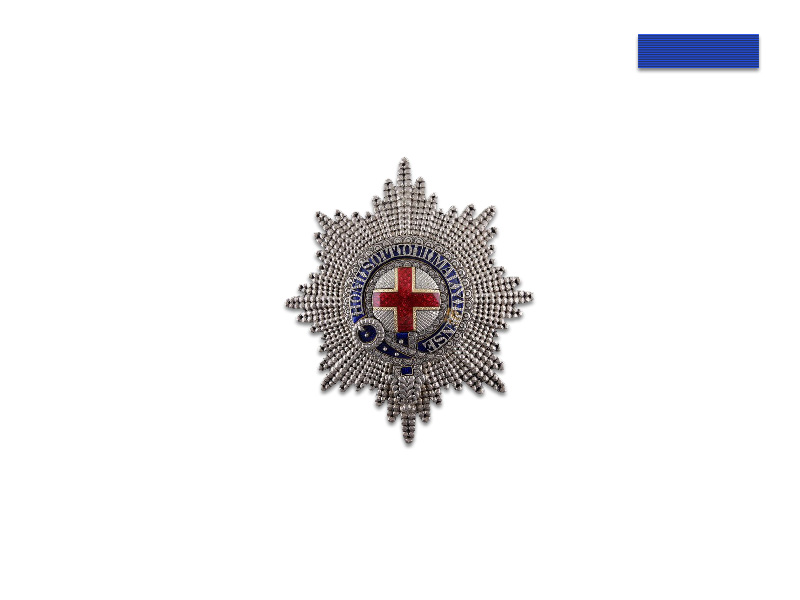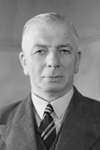Order of the Garter
The Most Noble Order of the Garter, the premier British Order, was instituted by King Edward III in 1348 and is one of the most ancient in Europe.
According to legend, the Order derives its name from an incident during a ball in 1348 when the Countess of Salisbury accidently dropped her garter; King Edward retrieved it, put it on his own leg and told the bystanders in French: "Honi soit qui mal y pense" which means: "woe to him who thinks evil of this" and this became the motto of the Order.
The insignia of the Order comprises the Garter of dark blue velvet and gold bearing the motto. The garter is worn by H.M. the Queen on the left arm below the elbow and by Knights on the left leg below the knee. The Star, a silver, eight-pointed star bearing in its centre the red cross of St. George's on a white ground surrounded by the garter and motto. Suspended from the star is The George, an enamelled figure of St. George fighting the dragon. The ribbon is 1.25" wide and coloured blue.
Conferment of the Order is restricted to the most senior members of the Royal Family and to 24 prominent people. It is also offered to Prime Ministers on retiring from office, although not all have accepted it. Winston Churchill -after losing his re-election after the war- refused the Order because, as he put it: "Why should I accept the Order of the Garter when people have given me the Order of the Boot".
There is only one rank, that of Knight Commander (KG) and bearers of the Order are induced into knighthood.
The Star of the Order of the Garter is used as a regimental badge by the Coldstream Guards.











